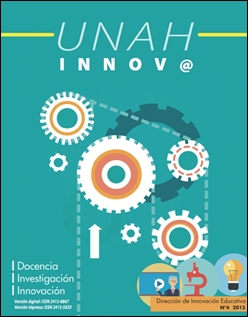Online education in the Race of Pedagogy of VS UNAH
DOI:
https://doi.org/10.5377/unahinnov.v0i4.2894Keywords:
virtual education, multidisciplinary model, educational innovation, online counselingAbstract
The Honduras Autonomous National University in the Sula Valley, UNAH-VS, started from 2006, a process of continuous transformation, proactive dynamism that has been the basis to promote and implement projects of educational and technological innovation in this Regional Centre. In this scenario it stands out as one of the significant innovative experiences, the challenge taken by the Pedagogy Department and Education at the UNAH-VS, for the launch of this Career Online from 2010.
This responsibility imposed on the governing body and faculty of this academic unit, various challenges ranging from, developing skills for the design of new and innovative environments mid learning ICT to be the first teacher to make that transition from a face teaching to an online teaching, which also involved the development of new professional, educational and communication skills.
The passage of this experience educational and technological innovation accompanied by the Educational Innovation Unit, DIE, is reflected in this article.
They are highlighted as achievements of substantial importance the virtualization of 23 courses, training more than a dozen teachers for teaching online. Holistically the capacity to innovate the training process of future professionals of pedagogy graduating from UNAH VS based on educational trends of this century.
UNAH INNOV@ No 4 2015 page 19-26
Downloads
1409




